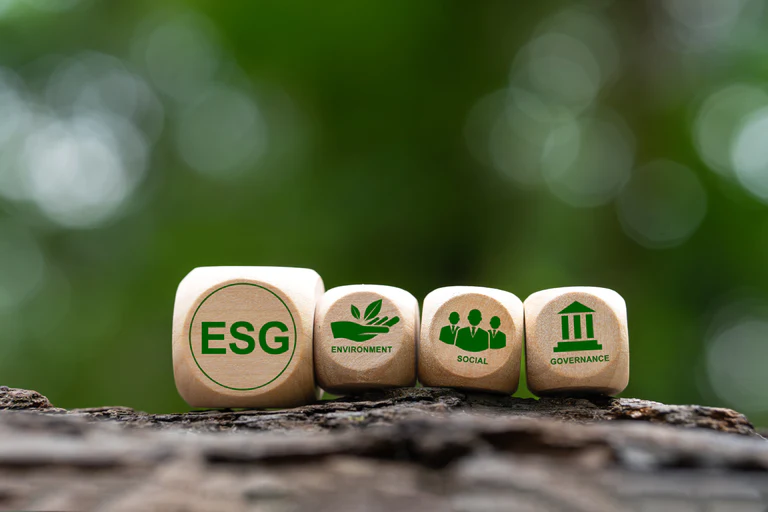6 Ways Construction Companies Are Meeting ESG Goals
January 22, 2025
With support from various industrial sectors and embracing various government reforms and sustainable practices, the UK is on track to achieve its net zero carbon emissions targets by 2050. At the recent COP29, the current PM, Sir Keir Starmer, upped the UK’s target to an 81% cut in emissions by 2035 from the original 68% reduction by 2030. With this renewed and ambitious target for the UK to lead in cutting emissions, organisations are looking to support this through upgrading their ESG goals.
Defining and setting clear Environmental, Social and Governance (ESG) goals helps organisations navigate the path to net zero and ensure social responsibility. ESG largely focuses on the environment in the building and construction sector, which accounts for 40% of the UK’s total greenhouse gas emissions.
Considering these facts, ESG in construction companies is a non-negotiable priority in the face of the climate change crisis. So, how can construction companies meet their ESG goals?
Hireforce Welfare provides essential information about the importance of ESG in the UK’s construction sector.
What Is ESG?
ESG is the framework for evaluating an organisation’s environmental, social and governance practices. Its priorities and goals differ for different industry sectors. In the construction industry, ESG goals define responsible, sustainable, and ethical practices that influence everything, from project planning to execution.
For construction, the ESG priorities include:
Environmental
Reducing carbon emissions, minimising waste generation, sourcing new and sustainable materials, and embracing energy-efficient measures.
Social
Keeping worker safety and well-being a top priority, embracing diversity in the workforce, engaging with local communities, and treating employees fairly.
Governance
Ensuring transparency in operations, following ethical and legally acceptable practices, and effective leadership at all stages.
Contractors and sub-contractors are key contributors to construction projects and are expected to follow the ESG goals of construction companies and the main developers they work with.
6 Ways Construction Companies Are Meeting ESG Goals
The UK’s building and construction sector is the largest contributor to greenhouse gases, producing waste and consuming non-renewable resources. Here are various ways companies are meeting their ESG goals in construction.
1. New and Sustainable Construction Materials
Construction companies are embracing the transition from conventional material sourcing to new and sustainable construction materials such as bamboo, recycled steel, and eco-friendly concrete. By incorporating these sustainable alternatives, companies can reduce their dependence on virgin resources.
This initiative is a step towards building a circular economy in which resources are reused, repurposed and recycled to reduce the overall environmental impact of building projects.
2. Green Buildings
In recent years, a growing number of projects have embraced green building designs. These buildings are packed with energy-efficient elements, including solar panels, highly efficient HVAC systems, and green roofs. Companies are also getting creative in minimising energy needs to meet their ESG goals in construction. They’re optimising natural light and ventilation in the building as a passive design technique.
3. Sustainable Construction Technology and Resource Management
Building Information Modeling (BIM) is a digital tool revolutionising how construction projects are designed, monitored and executed. These tools are integral to waste management, improving site efficiency and enhancing sustainability throughout the construction life cycle.
4. Safe and Healthy Worksites
Worker safety is a top priority for the success of any project. Construction firms and contractors are adopting stringent safety protocols and healthcare measures to minimise health and safety risks. Additionally, firms are increasing their focus and attention on worker well-being by providing timely safety and risk management training and protective equipment and resources such as site welfare units.
Hireforce Welfare recognises worker safety and well-being as critical ESG construction goals. A site welfare cabin hire with us equips your workers and worksite with all the well-being and welfare necessities in line with the HSE welfare regulations. Our fleet of well-maintained 6 to 16-person welfare cabins supports your efforts in meeting your social ESG goals.
Get in touch with our team for more information.
5. Anti-Corruption and Ethical Conduct
Corruption in the construction sector is a growing challenge, but some companies are taking a stand against it. By incorporating zero-tolerance policies on bribery and corrupt practices and encouraging fair competition, firms are setting a level playing field for all. This ensures increased trust with all involved stakeholders and regulatory bodies.
6. Supply Chain Transparency
Companies are actively scrutinising their supply chains to ensure they’re free from any unethical practices such as child labour, forced labour and unsafe working conditions. Embracing this step promotes transparency, which helps build long-term trust with investors, clients, and the public.
Hireforce Welfare Supports Your Organisation’s ESG Goals in Construction
Adopting ESG goals and principles goes beyond mere compliance. It’s a strategic move toward gaining a competitive advantage in the challenging building and construction sector. Integrating ESG in construction is seen as a differentiator to meet the growing demand for sustainable construction solutions from healthcare, finance, and technology clients in the UK.
Hireforce Welfare, a key unit of the Hireforce Group, supports your social and environmental goals. Our site welfare cabins on hire align with your social and environmental ESG goals by providing a supportive welfare environment for your on-site workers with sustainable technology that works on less energy and generates low emissions.
Contact us to learn more about our range of welfare cabins.